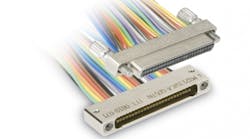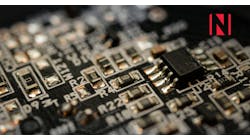As pricing and lead times for interconnect, passive and electromechanical (IP&E) components remain stable, distributors are focused on high-demand markets such as automotive and medical equipment manufacturing as they look for growth into 2014. Avnet Electronics Marketing is honing its focus on IP&E, playing up its strengths in both design and supply chain services to meet customer needs.
Avnet EM’s Dave Jakubowski, vice president of IP&E supplier management, sat down with Electronic Design’s sister publication Global Purchasing recently to discuss market trends and Avnet’s strategy to build business in what continues to be a steady marketplace:
Global Purchasing: What is your outlook for the IP&E market for the rest of 2013 and into 2014?
Global Purchasing: Are particular segments of this market performing better than others?
Jakubowski: Yes. The automotive market is quite healthy. Auto sales in the Americas have been pretty strong. Across the portfolio of IP&E, it’s strong. That’s because the infotainment involved in cars today, with GPS, Bluetooth, etc., lends itself toward IP&E products. As I speak to each of our suppliers, that’s typically the first thing I hear—that the automotive space [continues to show strong demand].
Medical markets continue to be very consistent, and lighting markets continue to be encouraging, as well.
We also see opportunities in commercial air. There is a lot of investment going on in that space. What we see that ties into the IP&E space is the density [and] miniaturization [trends] from an interconnect perspective. In this business, they are always trying to take weight out of the airplane. A number of our suppliers have content [that can address that issue], so we’re seeing that to be pretty healthy as well.
Global Purchasing: What are customers in this segment demanding most from their distributors today?
Jakubowski: Design chain and supply chain solutions. We have an opportunity to see a lot of designs early on because of the semiconductors on our line card, so we’re using that leverage to get an in to the IP&E products early in the cycle. [Customers] are looking for engineering support, for suggestions on design, and our line card is very rich. We have an opportunity to show customers two or three options to solve a problem. That’s really very consistent with what we do every day.
Customers are also looking for] new technologies and supplier training, so it’s important to be well versed on the new solutions that are out there. We have specific resources to help with this. We have some dedicated medical resources, lighting resources, and we’ve invested in a lighting lab in Arizona that offers value-add for that product segment.
From a supply chain perspective, as products get into production we’re asked to provide an array of value-added services, including managing and forecasting, inventorying product ahead of forecast, and so forth. And again, that’s consistent with what we do every day for customers.
Global Purchasing: What are you seeing in terms of product innovation?
Jakubowski: We love it when innovation comes out in IP&E. We’re excited when the new widget comes out and we can promote that. Speed is really [driving much of the innovation]. From an interconnect perspective, think about some of the high-end data communication, storage, and networking applications. It’s the high-speed data transfer that’s required from an interconnect perspective, whether you’re talking about board to board or board to chassis. That’s pretty exciting, and there are some decent ASPs [average selling prices] in that space. Again, this gets back to early involvement in the design chain, where you can get rewarded from suppliers by identifying that opportunity early on.
Everything has to be faster and smaller today, and we’re also seeing that in high-reliability and military applications as well.
Global Purchasing: Are you seeing any supply chain challenges in this product category?
Jakubowski: For the most part, lead times have been very manageable over the course of a number of months. For a whole year there has been very little disruption in the supply chain. It’s been very consistent.









